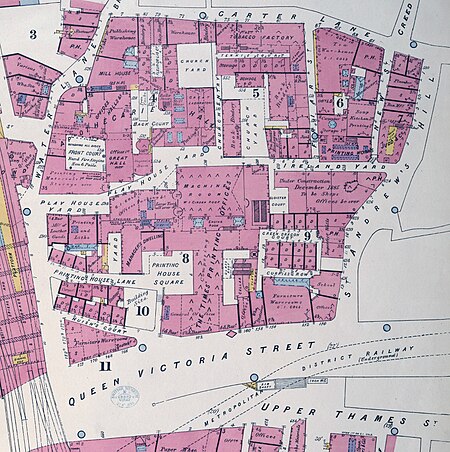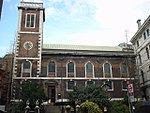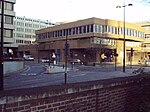Printing House Square
History of LondonLondon stubsNewspaper headquarters in the United KingdomSquares in the City of London

Printing House Square was a London court in the City of London, so called from the former office of the King's Printer which occupied the site. For many years, the office of The Times stood on the site, until it relocated to Gray's Inn Road and later to Wapping. The site has been completely redeveloped.
Excerpt from the Wikipedia article Printing House Square (License: CC BY-SA 3.0, Authors, Images).Printing House Square
Queen Victoria Street, City of London
Geographical coordinates (GPS) Address Nearby Places Show on map
Geographical coordinates (GPS)
| Latitude | Longitude |
|---|---|
| N 51.5124717 ° | E -0.102632 ° |
Address
Bank of New York Mellon
Queen Victoria Street 160
EC4V 4BY City of London
England, United Kingdom
Open on Google Maps









